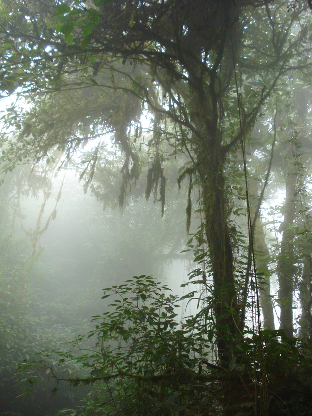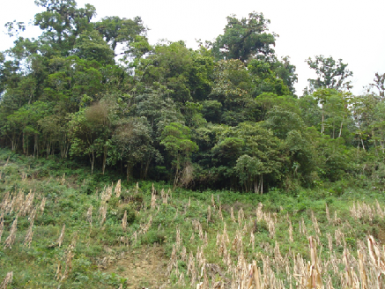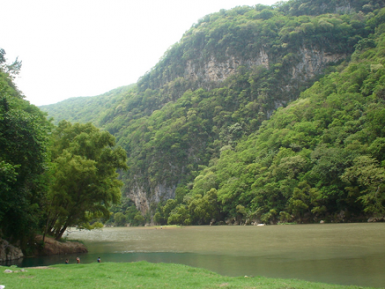Posted 07/27/11
Deforestation in much of Mexico is fueled by poverty. The path to sustainable forestry in Mexico thus may lie in alleviating poverty and the incentives to clear land. Payments for ecosystem services offer rural land owners a chance to benefit financially for preserving their forest by paying rural landowners to manage forest sustainably. Carlos Ramirez Reyes tries to answer whether or not these programs work using remotely sensed data.

PhD Candidate Carlos Ramirez Reyes spent his childhood in the megalopolis of Mexico City, but yearly ventures to his grandfather’s rural Village in Central Mexico sparked a love of nature that exists to this day. Over the years, Carlos also noticed that the landscape around his grandfather’s village was changing. What was once a forest filled with endemic species became a mix of corn fields and housing, and the village became more and more a city. Carlos’ story is one that has been repeated on landscapes throughout Mexico.Deforestation in much of Mexico is fueled by poverty. With few employment options, rural residents often clear land for timber profits and subsistence agriculture and grazing. The path to sustainable forestry in Mexico thus may lie in alleviating poverty and the incentives to clear land. Payments for ecosystem services offer rural land owners a chance to benefit financially for preserving their forest by paying rural landowners to manage forest sustainably. The Mexican National Forest Commission supports a payment for ecosystem services program that pays management costs to residents who have a forested land. In return for the payments, the residents agree to preserve at least 80% of their forest over the five years they are enrolled in the program. The hope is that over this period residents will learn how to manage their forest for both profit and sustainability over the long term. The question is, does the program actually preserve forest?

To answer this question Carlos will use state-of-the-science remote sensing techniques to determine if forests enrolled in the program are managed more sustainably than forest not enrolled. The scientific challenge lies in detecting the small changes allowed under the program (the 20% harvest rule) and other small changes which most often are not detected via remotely sensed images but may have large impacts on forest health. To this end Carlos is developing techniques of Landsat time stack series analysis.Because deforestation in Mexico is a social problem as well as an environmental one, Carlos is part of a team lead by economist Jenifer Alex Garcia at UW-Madison, Kate Sims at Amherst, and Elizabeth Shapiro at Duke, and Volker Radeloff also at UW-Madison. Carlos’ research is a critical first step of a total program evaluation which will focus on the health of the forest and the well being of the rural residents. Combined, the research will give a full account of the success and failures of this payment for ecosystem services scheme and will serve as the basis for improving the program in the future.So does Carlos think the program is working? He recently had the opportunity to travel to rural Mexico and talk to some of the program participants ‘In some rural villages the landowners are not even sure where the money is coming from, they are just glad to have some extra income’ Carlos says ‘but in other villages the people understand the importance of preserving their forest for themselves and future generations. They know things about the forest importance that I did not know until I was in college.’ style=text-align: center;>

“
Story by Van Butsic
